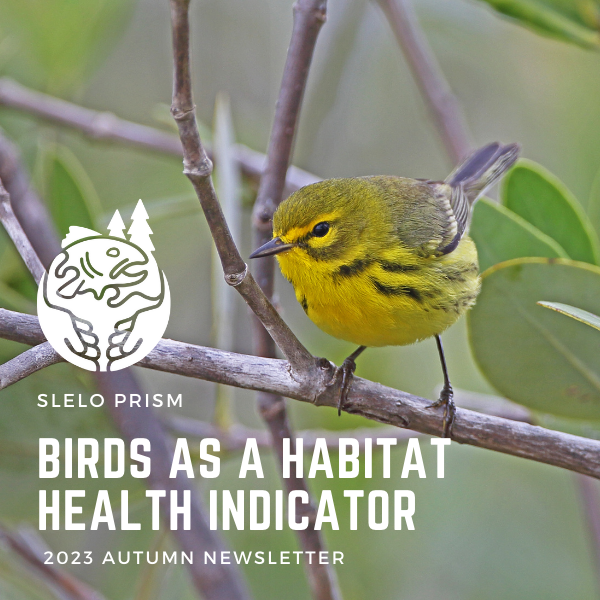This article was featured in the 2023 Autumn Newsletter by Neil Gifford– Conservation Director, Albany Pine Bush.
At the recent New York State Invasive Species Expo I was asked why my staff and I were banding birds. After all, they aren’t invasive. While all native wildlife has a story to tell about ecosystem health if we can hear them, birds are especially generous storytellers. So, we were at the Expo to demonstrate the science of listening to what the banded birds can tell us. In addition to being extraordinarily wonderful ambassadors for North American wildlife, as biological indicators birds are relatively quick to respond to changes in ecosystem composition, structure, and function; this includes those changes brought by both the invasion and management of invasive species.
While clearly a problem in itself, the successful large-scale invasion of plant and animal species is often only a symptom of a much bigger problem with ecosystem health. The causes for this are frequently the loss of essential ecosystem processes resulting from the compounding effects of systems being reduced in their size and extent, fragmented and less diverse. Without a highly functional reference community, it can be difficult to fully understand just how unhealthy a system may be, let alone if our actions to manage invasives and improve ecosystem health are really improving things at all. If you have never seen or quantified a healthy ecosystem that supports viable populations of species that are now rare, how do you know what condition you are managing for or what success looks like?

This was certainly the case for inland pitch pine-scrub oak barrens (PPSOB) in New York, and likely, many other ecosystems. Clones of black locust (Robina pseudoacacia), a non-native invasive legume perfectly suited to thrive in its nutrient-poor loamy fine sand, had replaced more than 700 acres of barrens in Albany when conservation efforts began in 1991. Nearly 400 acres of locust have been removed since 2006. In its place stand native grasses, wildflowers, trees, and shrubs sufficient to support a high-frequency, low-severity fire regime. Removing these clones of invasives and thinning forests of oak, pine, and maple, has increased the amount of PPSOB from roughly 400 acres in 1990 to nearly 1500 acres today. But just because it looks better to our human eyes, and supports manageable wildland fire, has ecosystem health really improved much? Time to listen to the birds!
Point Count surveys tell us that the distribution and abundance of breeding season PPSOB birds have improved, but source-sink dynamics are complicated in fragmented urban landscapes. By banding birds, we can now identify individuals and evaluate population dynamics. In 2012 we joined the Institute for Bird Population’s MAPS program. MAPS, or Measuring Avian Productivity and Survivorship— a standardized system for capturing and banding birds to evaluate a local breeding bird population. MAPS and point count data reveal that we have a robust and growing population of some birds that are declining. Our data reveals large populations of the suite (or sweet if you like) six pine barrens indicators, Prairie Warbler, Brown Thrasher, Eastern Towhee, Eastern Kingbird, Eastern Bluebird, and Field Sparrow.

Banding reveals the annual survival rate of Prairie Warbler is near 70 percent. Equipping some of these birds with GPS and Geolocators is also helping us understand breeding season habitat use, migratory timing, and wintering locations. This ultimately helps us quantify how our local actions to conserve the barrens are advancing bird conservation at large. Banding and GPS tagging Eastern Whip-poo-will, a previously extirpated species, has been especially helpful in understanding how removing non-native invasive, and overabundant native plants has improved ecosystem health. As scientists, bird banding is teaching us much about the health of the barrens and the benefits of our management actions.
When combined with how these compositional and structural changes have improved rare species populations and influenced the function of wildland fire, birds are giving us a clearer picture of what healthy inland pine barrens should look like. Bird banding has an even larger role in our conservation work. As so many professionals who visited our Expo demonstration observed, a bird in hand can be a powerful ambassador for the work that’s needed to effectively conserve and restore what’s left of the wild places. Looking into the eyes of an animal that travels on the wind for thousands of miles between continents is a powerful window into the natural world and a wonder-filled reason to protect it.
Please fill out the form below to be added to our listserv and receive our seasonal newsletter, event invitations and other announcements.


